You might call them by a different name like sandwich bags, freezer bags, or snack bags, but mention the brand name, Ziploc, and we all know that you are talking about reusable, resealable plastic bags. The next time you grab a Ziploc to store your leftovers and snacks, you might wonder if Ziploc bags are airtight. Being just as curious, we researched this question to find the answer for you.
Ziploc bags have a tight seal, but they are not completely airtight. The unique zipper seal will minimize the amount of air that can slowly seep into the bag to keep your foods fresher longer.
![A bundle of dill inside a Ziploc bag, Are Ziploc Bags Airtight? [And how to make them so]](https://kitchenseer.com/wp-content/uploads/2020/07/Are-Ziploc-Bags-Airtight-And-how-to-make-them-so.jpg)
So, how has SC Johnson managed to make Ziploc a household name? Keep reading, and we’ll take a closer look at the technology behind these user-friendly, reusable, plastic storage bags.
How Do You Make Ziploc Bags Airtight?
Ziploc’s ‘grip’n seal’ technology is simple to operate; just use your forefinger and thumb to press along the color-coded line indicating the seal located at the topmost edge of the bag. As you slide your fingers along to press the seal closed, you can feel and hear tiny, interlocking grooves clasping together. The magic happens because of Ziploc’s U.S. Patented zipper seal, designed to close entirely when the grooves are correctly aligned.
Click here to find this on Amazon.
Ziploc’s slider zipper ensures that your fingertips won’t slip, to leave a gap in the seal. Simply pull the slider across the color-coded seal for a guaranteed grip and properly sealed bag.
Click here to find this at Walmart.
If you want to be sure that all of the air is removed from your Ziploc before pressing the zipper for a final seal, we’ve got the method that works every time. Here is how to make your Ziploc airtight by using the water displacement method. You will need only a few items; a Ziploc bag and a bowl filled with water.
- Fill the Ziploc bag with food, or whatever you are storing. Carefully press the zipper to seal the bag, but leave the last bit, approximately 1/2-inch, open.
- Slowly lower the filled Ziploc bag into the bowl filled with water until the water reaches just below the partially zipped seal. Be careful not to get any water inside the bag!
- Press to the last remaining 1/2-inch of the zipper to completely seal the bag, and then remove the bag from the water. It’s that simple!
Although Ziploc bags do form a tight seal, the container is not entirely airtight. Because the interlocking grooves have minuscule spaces between them, air will eventually seep into the bag. The best way to ensure that you have airtight storage is to use a heat-sealing, vacuum-packed bag.
Click here to find this on Amazon.
Are Ziploc Bags Permeable?
Ziploc makes its plastic bags from low-density polyethylene (or LDPE) plastic film. This type of plastic is permeable to vapors and gases. You might not notice at first, but over time trace amounts of water vapor or gaseous odors can penetrate the plastic film.
You can test this by putting salt into the Ziploc bag, sealing the bag, and waiting. Water vapor will slowly penetrate the plastic film, and the salt will get wet. Your crisp crackers go stale or soggy when stored in a resealable plastic bag because they absorb trace amounts of moisture over time.
If you are wondering how safe it is to store food in plastic bags, check out our blog, “Is It Better to Store Food in Plastic, Glass, or Stainless Steel?” for the pros and cons of different types of materials used for food storage containers.
Are Regular Plastic Bags Permeable to Water?
The physical properties of plastic bags, like permeability and durability, vary depending on the microscopic pattern that is formed by polymer chains when the plastic film is made. Plastic films with a branching pattern tend to be thinner and weaker than plastic films with a linear, non-branching design.
Manufacturers make plastic bags from either of three types of plastic film and regardless of strength, each kind is permeable to water:
- Low-density polyethylene (LDPE)
- Linear low-density polyethylene (LLDPE)
- High-density polyethylene (HDPE)
Low-density polyethylene (LDPE), used for Ziploc bags, is very thin yet durable enough to be puncture resistant. It is recyclable as a #4 plastic.
Linear low-density polyethylene (LLDPE), used for shopping bags, is somewhat thicker than LDPE, and tear-resistant.
High-density polyethylene (HDPE), used for garbage bags, is the most durable type, yet somewhat stretchy. It is also recyclable as a #2 plastic.
Are Ziploc Bags Smell Proof?
Although a securely closed seal will trap most odors, both the seal and the LDPE plastic film that comprise Ziploc bags are permeable to odors. Eventually, if you store food for an extended period in a Ziploc bag, odors can escape or co-mingle with smells nearby.
Ziploc’s double zipper feature makes doubly sure that sealed odors stay in and unwanted odors stay out.
Click here to find this at Walmart.
Should You Use a Desiccant in a Ziploc?
It is OK to use a desiccant (or moisture absorber) inside a Ziploc bag, especially if you are storing foods long-term. A desiccant will help to keep foods fresher longer. It can be particularly useful to extend the shelf-life of food stored in humid climates where trace amounts of moisture can cause mold to develop or food to degrade over time.
Be sure to use a non-toxic desiccant like Silica Gel for food storage. Add Silica Gel packets to your dry foods like oats, rice, crackers, and cereal. Silica Gel can last between a few weeks to several months, depending on the humidity level and whether you store packets in an airtight container.
Click here to find this on Amazon.
Some Silica Gel beads have a color-change indicating that they are fully saturated. Not to worry, because you can reuse Silica Gel beads. Remove the beads from the packets, and place loosely onto a baking sheet. Bake the beads in a preheated, 200°F oven for approximately 2-hours (or until they have resumed the original color). Store dehydrated Silica Gel beads in an airtight container.
Click here to find this on Amazon.
Final Thoughts
Reusable, resealable plastic storage bags like Ziploc’s are versatile food storage containers. Ziploc bags require little storage space to keep handy in your kitchen. Food safe plastic film and zipper seal keep food fresh and can be either washed to reuse or recycled to reduce plastic waste.
If you are interested in other, reusable plastic food storage containers, check out our blog, “Should You Store Tupperware with the Lids On?” We’ll give you an in-depth look at the history of Tupperware and how to organize these virtually indestructible containers in your kitchen.


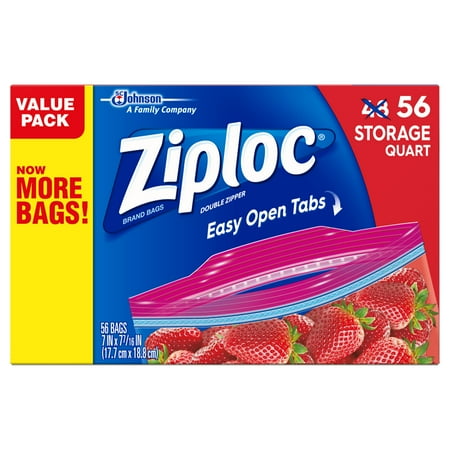

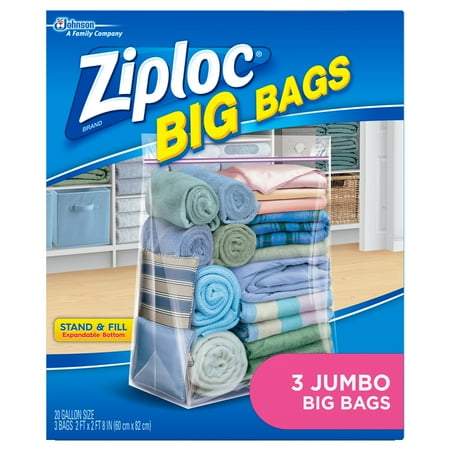


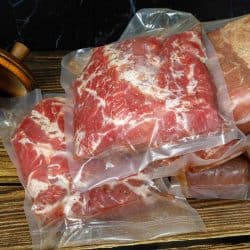
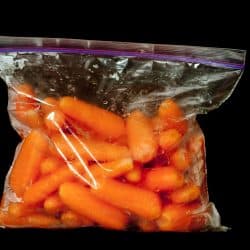


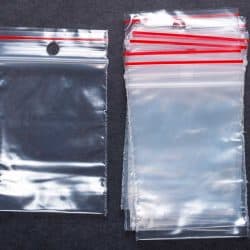
![Healthy food for kids concepts: well balanced school lunch box shot on blue table. School supplies are around the lunch box, How To Seal Plastic Food Containers [4 Cool Tricks!]](https://kitchenseer.com/wp-content/uploads/2020/12/Healthy-food-for-kids-concepts-well-balanced-school-lunch-box-shot-on-blue-table.-School-supplies-are-around-the-lunch-box-250x250.jpg)